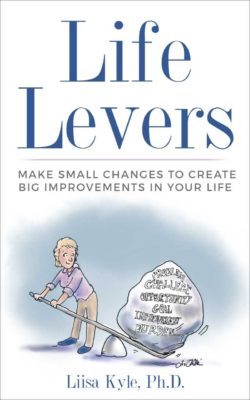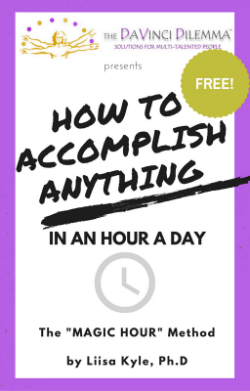
By Burty1 at en.wikipedia [Public domain], from Wikimedia Commons
Step One: Sit.
By ‘sit’ I mean, “situate yourself as if you were about to begin”. You might be sitting, you might be standing there amid your welding gear or trotting down the street, flagging a taxi to an important meeting. Put yourself in whatever position you need to be to commence whatever it is you want to do.
Step Two: Stay.
Okay, actually this is a multi-part step. First, decide on what would be a reasonable, do-able period of time to commit your focus to the task at hand — and ONLY the task at hand. This might be fifteen minutes of housecleaning or twenty minutes of making follow-up calls or thirty minutes walking on a treadmill or fifty minutes of writing or an hour of studying. What sounds like a good time frame, given whatever it is you want to do? Note: If in doubt, pick a shorter length of time.
Now: remove all distractions, to the extent possible. Commit to focus ONLY on the task at hand for the period of time you’ve chosen.
Set a timer.
Once the timer is ticking, begin.
Keep going until the timer turns off.
Warning: your monkey mind may try to hijack you during your period of focus. It’s as if your brain is a naughty child who suddenly needs your attention, simply for the sake of getting your attention. Don’t let it! If a distraction pops up the midst of what you’re doing, defer it until the end of your chosen time period. If you suddenly think of a great idea, quickly jot it down, then resume what you were doing. If you suddenly remember you forgot to do something, defer it until the timer goes off. (Hey, you’re already late, what’s a few more minutes?).
Do whatever you have to to keep focus on your chosen task for the entire time you’ve selected. Give yourself the experience — and pleasure — of doing what you set out to do. It feels good! Action feels much, much better than procrastination. And odds are high, you’ll keep going after that initial period. This is because once we get moving, it’s easier to keep going.
It’s up to you: when the timer does go off, you can either pause or keep going. You can take a break and then repeat the process. You can make it a daily practice.
This is such a simple technique and I’ve found it works with many different people trying to do myriad activities, under countless circumstances. There’s something about a timer than compels us to take action. Once we do so — once we actually start, we’ll actually make progress.
Trouble shooting: If you try this technique and don’t keep your focus on the task at hand for the entire time period, pick a shorter time period and try again. It may take a bit of trial and error to find the rhythm that words best for you.
Variation: Sit! Stay! Play!
If you’d like to make this technique a regular practice, here’s a suggested enhancement: do your activity for your chosen amount of time, then immediately reward yourself with some guilt-free play. (e.g. stretch, walk, have a cup of tea, read, listen to some music, meditate whatever would be a good break for you). Then repeat.
It’s up to you to find the Sit / Stay / Play pattern that works best for you given what you’re trying to do, your circumstances, and your preferences. What periods of time for work and for play? When? How often? Some people like to structure their days with Sit/ Stay / Play periods scattered throughout. Others like to distribute them throughout their week e.g. one Sit / Stay/ Play period per day, at least four times a week.
It’s also up to you to determine what “play” would be fun and rewarding — without causing other challenges. Play might include things like stretching, meditating, mindful eating, physical activity (yoga, jumping jacks, crunches or walking around the block), petting the dog, listening to a great song or simply lying down and resting your brain briefly. Things that are pleasant, peaceful and a change from your major activity are ideal – and this will be unique to you and the task at hand. Writers need to take a break from sitting at the keyboard whereas dancers need to rest their bodies. Musicians may need some quiet time whereas actors may need to do the hokey-pokey.
Less likely to be successful as ‘play’ might things like shoveling unhealthy food into your gullet while maniacally surfing the ‘net while trimming your toenails. Any multi-tasking, any stressful activity (like calling the cable company) or things difficult to stop after just five minutes (e.g. napping or computer Scrabble or chatting with a friend) should be avoided. Again, this is highly individualized. For example, ten minutes of internet surfing might be a nice ‘play’ activity after fifty minutes of writing for some people… but not a good choice for a web info junkie who can’t stop after ten minutes. If you find your “play” time is leaking into your Sit / Stay time, or causing other distractions, pick something else.
* * *
Activity: What would be good ‘play’ activities for you? Make a list of ten pleasant, healthy things you could do as a 5 – 10 minute treat between blocks of focused activity.
Now: Make a list of ten things that would NOT be ‘good play for you – things that are stressful or unhealthy or addictive i.e. likely to spill over into the next hour.
* * *
This week, try the Sit / Stay / Play method. Experiment to see what schedule or pattern works well for you. Let us know how you do – message us or leave a comment below.
***
For more, check out my book LIFE LEVERS: Make Small Changes to Create Big Improvements in Your Life
***
Want to re-publish this article? Go for it – just include the author’s name, a link to this original post and the following text blurb:
Are you struggling with too many talents, skills, ideas? You may have The DaVinci Dilemma™! Find tools, fun quizzes, coaching, inspiration and solutions for multi-talented people at http://www.davincidilemma.com/ .




